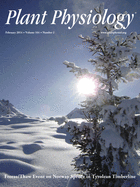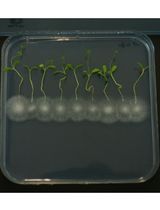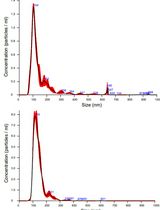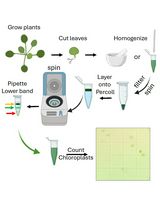- EN - English
- CN - 中文
Isolation of Mitochondria from Potato Tubers
分离马铃薯块茎线粒体
发布: 2014年09月05日第4卷第17期 DOI: 10.21769/BioProtoc.1226 浏览次数: 19871
Abstract
One way to study the function of plant mitochondria is to extract them from plant tissues in an uncontaminated, intact and functional form. The reductionist assumption is that the components present in such a preparation and the in vitro measurable functions or activities reliably reflect the in vivo properties of the organelle inside the plant cell. Here, we describe a method to isolate mitochondria from a relatively homogeneous plant tissue, the dormant potato tuber. The homogenization is done using a juice extractor, which is a relatively gentle homogenization procedure where the mitochondria are only exposed to strong shearing forces once. After removal of starch and large tissue pieces by filtration, differential centrifugation is used to remove residual starch as well as larger organelles. The crude mitochondria are then first purified by using a step Percoll gradient. The mitochondrial band from the step gradient is further purified by using a continuous Percoll gradient. The gradients remove contaminating amyloplasts and peroxisomes as well as ruptured mitochondria. The result is a highly purified, intact and functional mitochondrial preparation, which can be frozen and stored in liquid nitrogen in the presence of 5% (v/v) dimethylsulfoxide to preserve integrity and functionality for months.
Keywords: Mitochondria (线粒体)Materials and Reagents
- Mannitol
- 3-morpholinopropane-1-sulfonic acid (MOPS)
- Potassium hydroxide (KOH)
- Bovine serum albumin (BSA)
- Ethylenediaminetetraacetic acid (EDTA)
- Cysteine
- Percoll
- Sucrose
- Dimethylsulfoxide (DMSO)
- Liquid nitrogen
- Extraction medium (see Recipes)
- Wash buffer (see Recipes)
- Gradient buffers (see Recipes)
- Percoll gradients (see Recipes)
Equipment
- Potato tubers
- 6 x 250 ml precooled angle rotor (e.g., Beckman Coulter, model: JA-14 or Thermo Fisher Scientific, model: SLA-1500 )
- 8 x 50 ml pre-cooled angle rotor (e.g., Beckman Coulter, model: JA-20 or Thermo Fisher Scientific, model: SS-34 )
- Juice extractor (kitchen appliance, e.g. Maginix Le duo XL)
- Centrifuge (for 50 and 250 ml tubes) (e.g. Beckman Coulter or SorvallTM)
- Paint brush (soft)
- Cotton cloth or nylon net (e.g., mesh 60-120 μm)
- Plastic Pasteur pipettes
- Beakers
- Measuring pipette
- pH meter
- Potato peeler
- Funnel
Procedure
文章信息
版权信息
© 2014 The Authors; exclusive licensee Bio-protocol LLC.
如何引用
Readers should cite both the Bio-protocol article and the original research article where this protocol was used:
- Havelund, J. F., Salvato, F., Chen, M., Rao, R., Rogowska-Wrzesinska, A., Jensen, O. N., Gang, D. R., Thelen, J. J. and Møller, I. M. (2014). Isolation of Mitochondria from Potato Tubers. Bio-protocol 4(17): e1226. DOI: 10.21769/BioProtoc.1226.
- Salvato, F., Havelund, J. F., Chen, M., Rao, R. S., Rogowska-Wrzesinska, A., Jensen, O. N., Gang, D. R., Thelen, J. J. and Møller, I. M. (2014). The potato tuber mitochondrial proteome. Plant Physiol 164(2): 637-653.
分类
植物科学 > 植物细胞生物学 > 细胞器分离
植物科学 > 植物细胞生物学 > 组织分析
细胞生物学 > 细胞器分离 > 线粒体
您对这篇实验方法有问题吗?
在此处发布您的问题,我们将邀请本文作者来回答。同时,我们会将您的问题发布到Bio-protocol Exchange,以便寻求社区成员的帮助。
Share
Bluesky
X
Copy link












